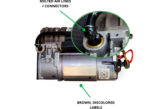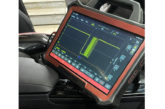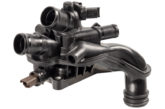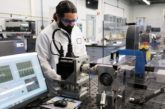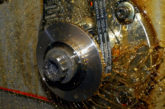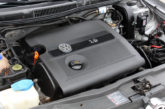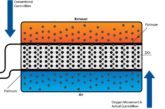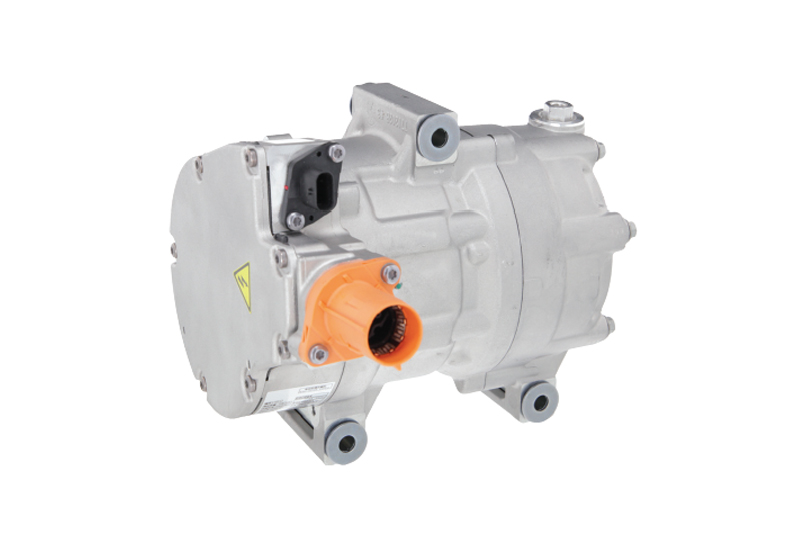
Valeo is keeping professional workshops ahead of the game when it comes to thermal management.
The compressor is responsible for circulating refrigerant through the air conditioning system. It compresses low-pressure refrigerant gas into a high-pressure, high temperature state before sending it to the condenser. If the compressor fails, the entire A/C system loses its ability to cool, leading to discomfort for the driver and potential damage to other components.
The A/C Condenser: heat dissipation for efficient cooling
The condenser works like a radiator, cooling down the high-temperature refrigerant gas and converting it into a liquid state. It plays a crucial role in regulating the system’s temperature and overall efficiency. If the condenser is clogged or leaking, it can lead to overheating, poor cooling performance, and increased strain on the compressor.
Common issues
Compressor failures – Can result from refrigerant leaks, contamination, or lack of lubrication. Symptoms include unusual noises, reduced cooling, or complete system failure.
Condenser malfunctions – Often caused by debris buildup, corrosion, or leaks. Signs include overheating, weak airflow, or reduced cooling efficiency.
Refrigerant cycle disruptions – If either component is compromised, the entire A/C system becomes inefficient, leading to increased energy consumption and potential vehicle overheating.
Regular maintenance of compressors and condensers is essential to:
- Ensure A/C efficiency: Well maintained components improve cooling performance and fuel efficiency.
- Prevent costly repairs: Early detection of wear and leaks helps avoid major system failures.
- Extend component lifespan: Keeping the system clean and well-lubricated reduces strain on the A/C system.
Valeo releases free EV air conditioning training
Valeo Service UK has released a new free training module on its Valeo Tech Academy platform, offering technicians a clear and accessible introduction to the key principles behind battery electric vehicle (BEV) air conditioning systems.
Presented by Valeo technical trainer Stewart Lynch, the session explores the evolving role of vehicle air conditioning systems, highlighting not just their impact on cabin comfort but also their critical function in battery thermal management.
“When it comes to EVs, air conditioning isn’t just about keeping the cabin cool,” Stewart explains. “It plays a key role in regulating battery temperature, which is essential for performance, safety and longevity.”
The course breaks down the core differences in compressor technology. While internal combustion engine vehicles use belt-driven compressors lubricated with PAG oil, BEVs rely on electrically driven compressors powered by the high-voltage battery. These offer greater precision and energy efficiency, thanks to sensor-driven input and inverter-based control.
Temperature, solar, and humidity sensors feed data into the electronic control unit, which works with the inverter to modulate compressor speed and protect against voltage spikes and overheating. Understanding how these systems work, and how to diagnose faults, is now essential for workshops.
Available on Valeo Tech Academy, the new module forms part of a growing library of free and IMI-certified training. The platform covers a wide range of topics from traditional maintenance and repair to hybrid and electric vehicle systems, as well as advanced driver assistance systems (ADAS).
Courses feature interactive, gamified content designed to make learning more engaging and effective, with pre- and post assessments enabling technicians to monitor their progress and measure skill development.
Technicians can also find additional resources on the Valeo Tech Assist website, including fitting guides and technical bulletins – all available at no cost. Plus, those fitting Valeo products can scan barcodes to earn rewards through the Valeo Specialist Club, redeemable in the Valeo online shop.


